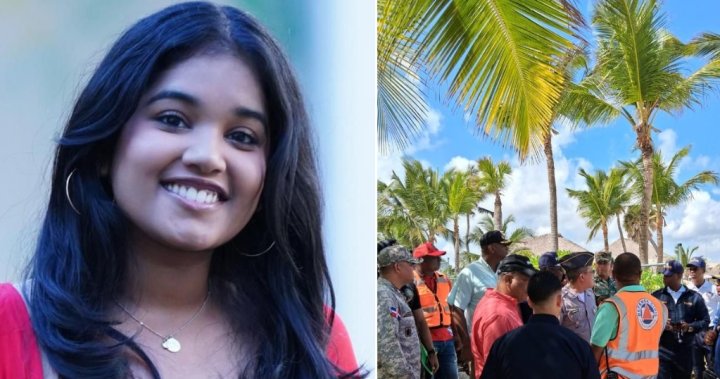UNITED NATIONS, Apr 02 (IPS) - After nearly two years of extended warfare and protracted crises as a result of the Sudanese Civil War, Sudan remains the world’s biggest internal displacement crisis. According to the United Nations High Commissioner for Refugees (UNHCR), heightened insecurity, widespread famine, economic strife, and climate shocks threaten the lives of approximately 25.6 million people.
On March 28, the Food and Agriculture Organization (FAO) released a report examining the scale of needs in Sudan. It is currently estimated that roughly half of Sudan’s population faces acute food insecurity. Famine has been declared in five areas, including North Darfur and the Western Nuba mountains. FAO predicts that famine is imminent in numerous conflict hotspots, such as Darfur, Khartoum and Kordofan.
As a result of unrelenting insecurity in Sudan for nearly two years, agricultural systems have been decimated. Climate shocks, damage to critical infrastructures, and the lack of essential services, such as veterinary care and gardening tools, have made it nearly impossible for the majority of Sudanese civilians to self-sufficiently produce food or income. FAO estimates that the livelihoods of nearly two-thirds of the population have been disrupted.
“This is a full-scale hunger crisis and I’m going to call it a catastrophe. The civil war has killed thousands, uprooted millions and set the country ablaze, and yet it’s forgotten, (despite being) the epicentre of the world’s largest and most severe hunger crisis ever,” said World Food Programme (WFP) Director Cindy McCain.
Zahra Abdullah, a Sudanese refugee residing in the Al Salam displacement shelter bordering Nyala City, told Doctors Without Borders (MSF) of the harsh living conditions for displaced civilians.
“This is not the first war I have experienced, but it is definitely the most devastating to my life. The living conditions here are harsh, and everything is a daily struggle…But even so, the suffering never ends. It starts with finding clean water to drink, continues with trying to provide enough food, and ends with finding a place to sleep. Sometimes I sit alone and think: is this the life I will live forever?” said Abdullah.
FAO urgently requires 156.7 million USD to provide food assistance to over 14.2 million people in 2025. FAO’s investments in the agricultural sector include deliveries of crop packages, livestock vaccinations, and economic assistance for families who run fisheries. If fully funded, this would enable Sudanese civilians to produce income self-sufficiently and diversify their diets, helping to offset malnutrition and food insecurity.
In their March 30 situation update on the current levels of insecurity in Sudan, UNHCR reported high levels of conflict present in the Khartoum, Kordofan, Darfur, and White Nile States, with regular airstrikes and artillery shellings destroying civilian infrastructures and causing significant civilian casualties.
According to figures from the United Nations (UN), there have been dozens of reported casualties and over 120,000 internal civilian displacements in the past few weeks alone. Within the first three months of 2025, Action on Armed Violence (AOAV) has recorded 1,925 civilian casualties as a result of explosive weapons in Sudan.
On March 25, the Sudanese Armed Forces (SAF) conducted an airstrike on the Tura Market, which is roughly 45 kilometers away from El Fasher in the North Darfur state. Although the total number of civilian casualties has yet to be confirmed, it is estimated to fall between 100 and 270. Adam Rejal, a spokesperson for the Sudanese humanitarian organization General Coordination, stated that women accounted for more than half of the casualties.
According to the latest figures from the International Organization for Migration (IOM) Displacement Tracking Matrix (DTM) update, there are currently over 11 million internally displaced civilians in Sudan, with the majority having been displaced from Khartoum, South Darfur, and North Darfur.
Despite conflict continuing to rage on in Sudan, IOM recorded a decrease in internal displacements by 2.4 percent between December 2024 and March 2025. Although IOM estimates that roughly 400,000 internally displaced civilians have begun returning to their homes in Al Jazirah, Khartoum, and Sennar, many have returned to areas that lack critical resources such as food, shelter, and healthcare. According to the Office for the Coordination of Humanitarian Affairs (OCHA), bombardments and artillery shellings have destroyed or significantly damaged a litany of critical infrastructures, including water reservoirs, hospitals, and schools.
“While many people are eager to return home, the conditions for safe and sustainable return and integration are not yet in place,” said Mohamed Refaat, Chief of Mission of IOM Sudan. “Basic services including healthcare, protection, education, and food are scarce, and the lack of functional infrastructure and financial capacity will make it difficult for families to rebuild their lives.”
Levels of displacement have been on the rise in North Darfur and the White Nile states due to heightened insecurity in those areas. The UN and its partners remain on the frontlines of this crisis, providing basic services and nutritional assistance to communities that have been hit the hardest by this crisis.
On March 27, WFP delivered 1,200 metric tons of food to roughly 100,000 people in the Bahri and Omdurman regions in Khartoum, marking the first time WFP deliveries had successfully reached civilians in the area since the latest surge of hostilities.
IPS UN Bureau Report
Follow @IPSNewsUNBureau
Follow IPS News UN Bureau on Instagram
© Inter Press Service (2025) — All Rights Reserved. Original source: Inter Press Service

 23 hours ago
6
23 hours ago
6










 English (US) ·
English (US) ·